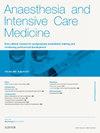急慢性疼痛的药物优化
IF 0.3
Q4 ANESTHESIOLOGY
引用次数: 0
摘要
疼痛是一种复杂的疾病,需要基于生物-心理-社会模型的多学科方法。虽然通常在急性疼痛中成功,但药物治疗本身在慢性疼痛的管理中很少成功,因为需要治疗的患者数量很多,才能在功能、生活质量和疼痛评分方面实现临床有意义的改善。在短期和长期内也有明显的副作用。最近对临床试验数据的重新分析侧重于个体应答率,表明有一组患者实现了50%的疼痛缓解,随后身体功能得到改善。为了避免治疗慢性疼痛的药物产生无法忍受的副作用,滴定需要缓慢,并以患者和治疗医生之间商定的风险收益为目标,并制定明确的计划,以便在这些目标没有实现的情况下断奶和停止。以疼痛为导向的物理治疗,无论是单独治疗还是作为疼痛管理计划的一部分,都应该提供,并且在功能恢复后减少药物治疗或断奶。本文章由计算机程序翻译,如有差异,请以英文原文为准。
Medicines optimization in acute and chronic pain
Pain is a complex condition and warrants a multidisciplinary approach based on a bio-psycho-social model. Whilst often successful in acute pain, pharmacological treatment is rarely successful on its own in the management of chronic pain due to the high number of patients needed to treat to achieve a clinically meaningful improvement in function, quality of life and pain scores. There are also significant side effects in the short and long term. Recent re-analysis of clinic trial data focused on individual responder rates, showed that there is a cohort of patients who achieve 50% pain relief with subsequent improvement in physical function. To avoid intolerable side effects from medication used for chronic pain, titration needs to be slow and aimed towards the agreed risk benefit between patients and treating physician with a clear plan for weaning and cessation if these goals are not achieved. Pain-orientated physiotherapy, either on its own or as part of a pain management programme, should be offered and medication reduced or weaned after restoration of function has been achieved.
求助全文
通过发布文献求助,成功后即可免费获取论文全文。
去求助
来源期刊

Anaesthesia and Intensive Care Medicine
ANESTHESIOLOGY-
CiteScore
0.50
自引率
0.00%
发文量
152
期刊介绍:
Anaesthesia and Intensive Care Medicine, an invaluable source of up-to-date information, with the curriculum of both the Primary and Final FRCA examinations covered over a three-year cycle. Published monthly this ever-updating text book will be an invaluable source for both trainee and experienced anaesthetists. The enthusiastic editorial board, under the guidance of two eminent and experienced series editors, ensures Anaesthesia and Intensive Care Medicine covers all the key topics in a comprehensive and authoritative manner. Articles now include learning objectives and eash issue features MCQs, facilitating self-directed learning and enabling readers at all levels to test their knowledge. Each issue is divided between basic scientific and clinical sections. The basic science articles include anatomy, physiology, pharmacology, physics and clinical measurement, while the clinical sections cover anaesthetic agents and techniques, assessment and perioperative management. Further sections cover audit, trials, statistics, ethical and legal medicine, and the management of acute and chronic pain.
 求助内容:
求助内容: 应助结果提醒方式:
应助结果提醒方式:


